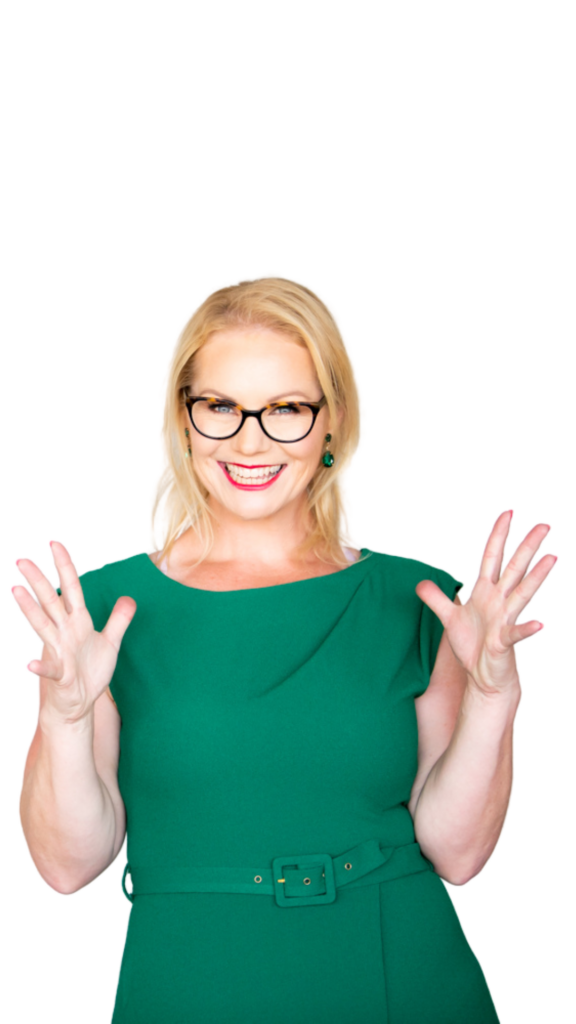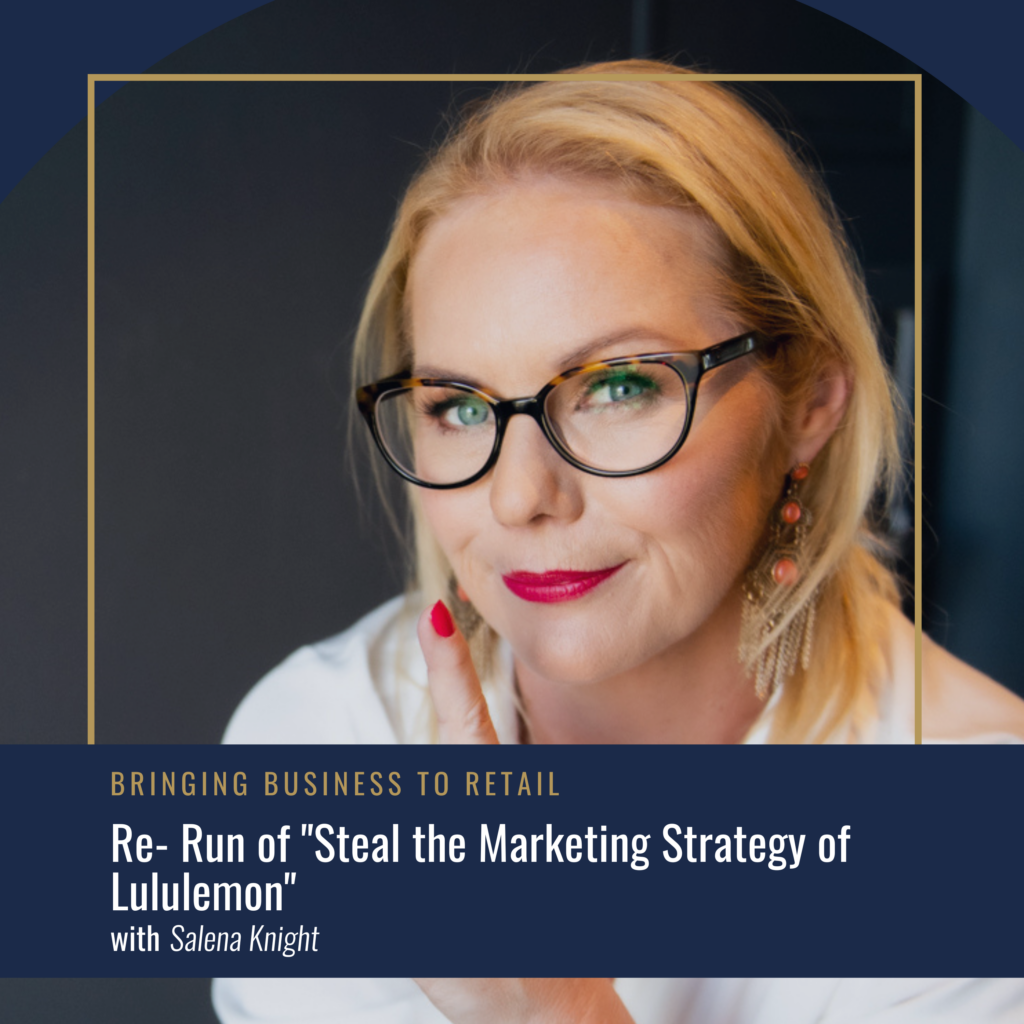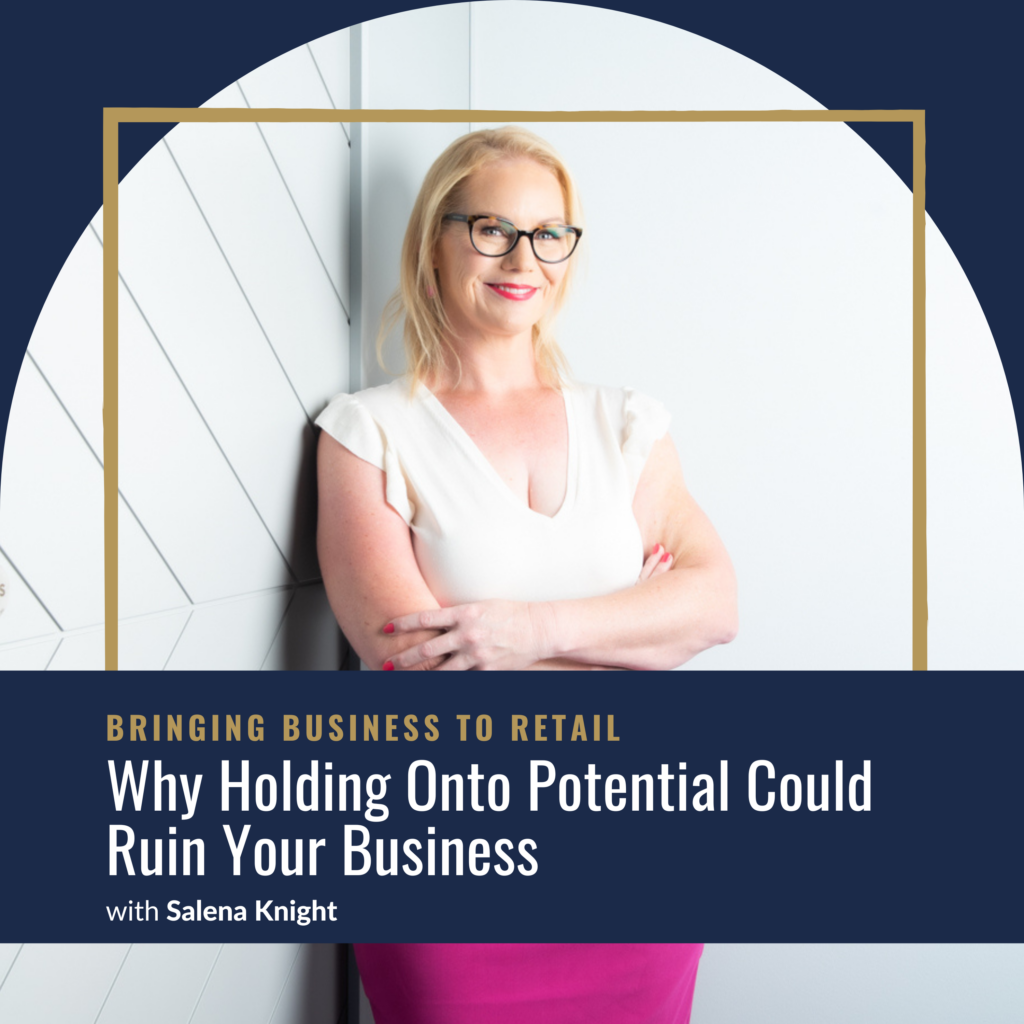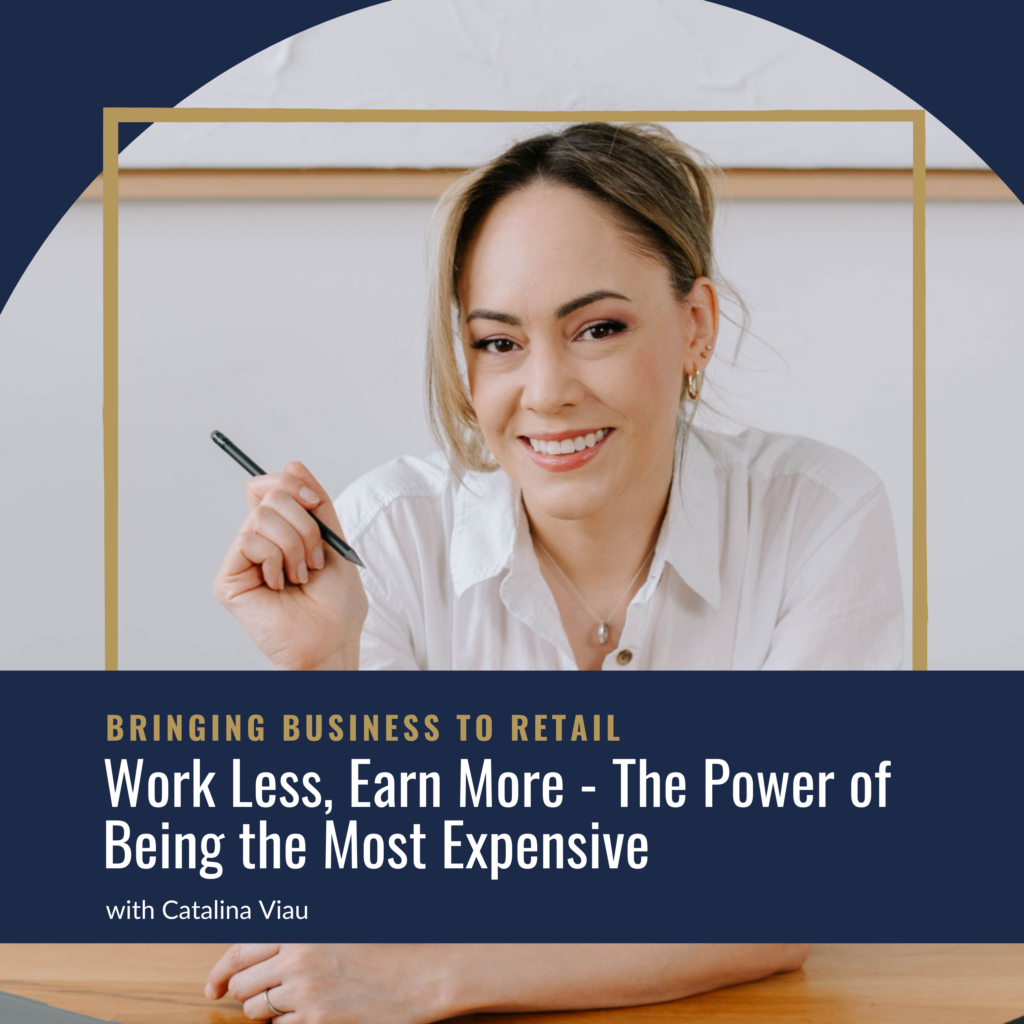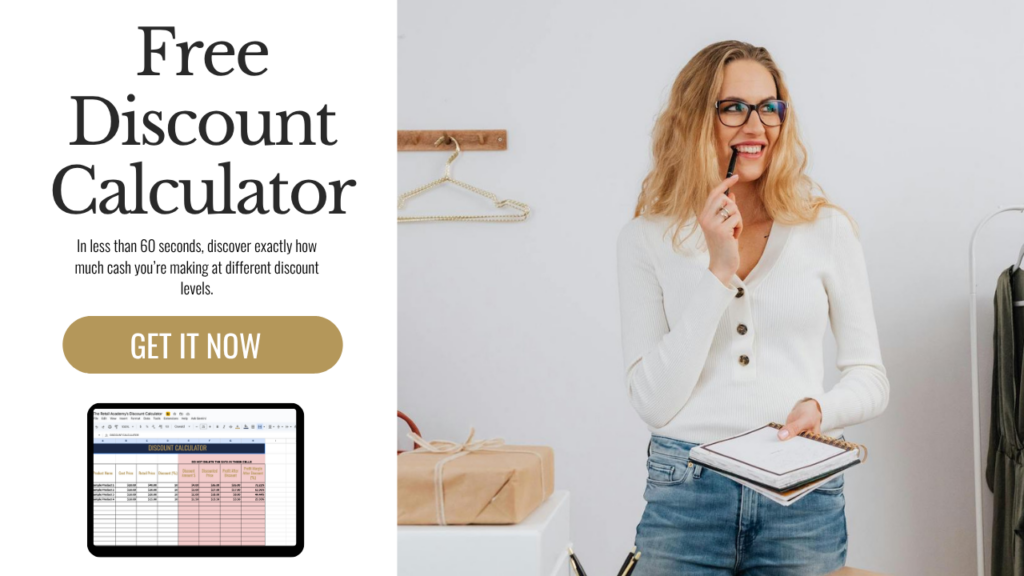
Just one of the advantages you have over a big box store is the ability to adapt to a changing marketplace.
Whether it’s the economy, the latest TikTok Trend, or simply unseasonably mild weather, the simple fact is, YOU have the resources to give your customers what they want.
In this episode, I’ll walk you through some key ways to help you do just that.
You’ll discover:
• How to analyze customer data to identify emerging trends and adjust your product mix accordingly
• Proven tactics for boosting average order value through personalization, upsells and cross-sells (that your customers will love)
• The #1 e-commerce strategy that can turn struggling businesses profitable overnight (Hint: It’s not what you think)
• Surefire ways to increase customer lifetime value and keep your best buyers coming back again and again
• Simple email marketing tweaks that can dramatically improve your open rates, click-throughs, and conversions
Whether you run an online store, a brick-and-mortar shop, or a blend of both, this episode is packed with actionable advice you can implement right away to recession-proof your business.
———-
Economic Impact on Luxury Brands and Middle Class 0:02
Adapting to Economic Changes in Retail 3:00
Understanding Customer Needs and Tracking Inventory 5:08
Price Sensitivity and Product Adjustments 7:15
Increasing Average Order Value and Upsells 9:37
Optimizing Point-of-Sale and E-Commerce Upsells 14:43
Increasing Customer Lifetime Value 18:08
Testing and Measuring Email Marketing Campaigns 24:26
Adapting to External Factors and Continuous Improvement 29:04
Call to Action and Review Request 29:43
LISTEN NOW on The Bringing Business To Retail Podcast
0:00:03 - (Salena Knight): Hey there, and welcome to the bringing business to retail podcast. If you're looking to get more sales, more customers, master your marketing and ultimately take control of your retail or e commerce business, then you're in the right place. I'm Selena Knight, a retail growth strategist and multi award winning store owner whose superpower is uncovering exactly what your business.
0:00:30 - (B): Requires to move to the next level.
0:00:33 - (Salena Knight): I'll provide you with the strategies, the tools and the insight you need to scale your store. All you need to do is take action. Ready to get started?
0:00:52 - (B): Hey there, and welcome to the bringing business to retail podcast. Now, everywhere we look, people are talking about prices going up and the simple fact is no one is immune. Rents are going up, mortgages, even a basket of basic food items has almost doubled in some areas. When the economy tightens, what we often see is that luxury brands tend to avoid the roller coaster because the customers buying a Louis Vuitton handbag or a Cartier watch, those people generally have enough of a buffer that the bumps and the dips are not felt as much as the regular working class.
0:01:36 - (B): But when brands like Burberry have a 16% drop in share price and Hugo Boss announces second quarter preliminary earnings showing around a 40% plunge in operating profits year over year, you know that there is always going to be a knock on effect. Whilst some of the decreases in those luxury brand sales and share prices is due to really big reductions in sales in Asia, the simple fact is many wealthier people derive their income from a portfolio of assets and that is generally going to be filled with things like shares and property.
0:02:17 - (B): So if dividends drop significantly because the share prices have gone down, and you couple this with increased mortgage rates, you can see how even people with a diverse portfolio of assets can start to feel the pinch. For most of you listening, I'm guessing that your target customers probably aren't those high net worth individuals. Most likely they're the middle class or upper middle class working people.
0:02:46 - (B): And even though they might be double income households with really well paying job, the simple fact is discretionary spending has become more discretionary. We can't avoid that. That is what happens when the market changes, when the economy changes. And so as the market changes, you have to be tracking what is happening, what is happening with share prices, what is happening with mortgage rates, what is happening with the price of food. Now during COVID when shipping rates went up and our staff costs went up, we knew that it was really important to be looking at cost of goods and adjusting those on pretty much a weekly sometimes daily basis as your orders came in.
0:03:30 - (B): But we were increasing prices, but it didn't hinder spending. And it was this very weird scenario economically because we were in this bubble where people were happy to spend, but because we've taken so many things away, they were happy to spend money, to indulge, to make themselves feel better. But times have changed and money is not flowing as freely as it was. And if you want to keep your business in business, you have to be creating offers that meet your customers where they are at right now.
0:04:09 - (B): You can't control the economy, but you can control the products that you stock, you can control the marketing that you do, and you can control your messaging and the offers that you create in business. You adjust the things that you can control to adapt to the external factors that you can't control. So in this episode, what I want to do is look at ways that you can adapt your product range, your marketing, your promotions, and use your data to get your customers spending. Are you ready to jump in? I think you might need a pen and paper for this one because I am going to give you, you know, bang, bang, bang, rapid fire. A whole bunch of things that you could be trying out in your business to keep your business in business. Are you ready for the first one? Now this one might seem like a no brainer, so forgive me if you think it is obvious, but I know so many people overlook this and that is sitting down and looking at what do your customers want right now?
0:05:12 - (B): What are the effects that the economy is having on them? What are your customers asking for? And think about? Do you have a system to track this? I know in our stores, in our customer tracker sheet, we used to write down what did people ask for today? And there was a box there. And anything that someone asked for that we didn't have went into that box. And at the end of the week, I would look at what do people ask for?
0:05:37 - (B): And then that actually helped us make our buying decisions because if someone was coming into our store, they already had intent to buy and they were coming for something in particular. And if we didn't sell that, but that's what we were coming to us for. It was a scenario that I had to sit down as the inventory manager and work out, do enough people want this? Should I pre sell it to see if there's actual demand?
0:06:05 - (B): Or was it just the one off? Like, you do not want the box of bedazzled t shirts because one customer asked for them. I will never make that mistake again. They were not bedazzled t shirts. But too many times I ordered stock in for somebody who probably never came back. Like so many times they never came back, but probably would never come back again. And meanwhile, I was left trying to get rid of this stock because I didn't know who my customers were. I didn't know who my customers were, but I was buying for this random one off person because I was trying to be everything to everyone.
0:06:35 - (B): Are you tracking what your customers are asking for in that vein? You know, are you regularly checking your inventory to see what is trending and what isn't? These are numbers. This is data that, as the CEO, you should be looking at on at least a weekly basis. What are those trends? So you can look at your own inventory, have a look at your social media. What are people, what's trending on TikTok? People are going to buy what's trending on TikTok?
0:07:06 - (B): What is trending on Instagram? Look at your Google trends. Do the keyword searching. Look to see what people are shopping for? What we tend to find when people are tightening their belts is a thing called price sensitivity, because people don't want to give up something that they love. And so if you do have customers who right now are price sensitive, which for a lot of you, that is a lot of your customers, if they are feeling the pinch, think about ways that you can still give them what they want, but at a price point, they can afford.
0:07:41 - (B): Now, that might look like something. And this is what I was alluding to earlier when you were looking at your data, can you see that smaller sizes are trendy? Like you might sell a 300 mil shampoo and a 150 ML shampoo? Like, are the smaller sizes because they are cheaper? Are they trending? Or conversely, are larger sizes trending because people are trying to buy in bulk? And I say that in terms of volume, not in terms of size of clothing. But maybe that is something as well that you should be looking at. If that is a trend that you're seeing, can you look at getting smaller sizes of your core product range, or I those trending products?
0:08:24 - (B): Or even if you find that people are still buying but what they're buying are at lower price points, can you think of investing in a dupe? If your customers are open to alternatives, that might be something that gets them over the line to buy. They can't afford this, but they can afford that. And if that is something that your customers would adapt to and they are open to buying, that is where social media is, your friend.
0:08:51 - (B): You should be looking at those products, not should yet. You should be looking at those products and seeing, is there a dupe if it is a high price point. This is so relevant in things like beauty, skincare, hair care, fragrance, all those kinds of things where there are even furniture, like here in Australia, brands like Kmart, which is probably the equivalent of Walmart in America, they are duping the bejesus out of household furniture. And you can buy a coffee table for 30, 40, $50. That is a dupe of a five, $600 table.
0:09:27 - (B): And so they know what their customers are looking for. They know what is trending. And so by analyzing the data and looking at those trends, that is going to help you adjust your inventory to be able to meet your customers where you're at. Okay, the next one, when we find that people change their spending habits, what we tend to find is the average order value changes. In this case, average order value right across the board has pretty much gone down.
0:10:02 - (B): And you are looking for any possible way right now that you can increase your items per sale and your average order value. So items per sale is how many items are people buying in each order. And of course, your average order value is the average order value. That is the average of the amount that people are spending over the number of orders or transactions that you've processed. So when you're looking at those, every dollar counts. In fact, every penny counts right now, because all of this goes towards your bottom line.
0:10:37 - (B): What I think is really important is making sure that you are cross selling and upselling in your business. So cross sell, and big stores like Cotton on and Macy's and next, they do this so well. You have to go through a maze of point of sale upsells and cross sells before you even get to the till. They do this online as well. So, thinking about that for your brand, what do you have in, say, the five to $10 range? And maybe if your average order value is only $30, you might need something in the one to five range.
0:11:16 - (B): I like to think that that point of sale upsell or that cart upsell tends to sit at around five to 10% of your average order value. Now, that's not a rule. I say this with a caveat. Five to 10%, 10% obviously, is going to be much more profitable for you. But it all depends on your customer. You might have a better product that your average order value might be $50, but a $15 product sells really well, in which case, throw that piece of advice out the window and you go with what works for your business.
0:11:48 - (B): All of this is advice that you can take and you can adapt your scenario for your store or your ecommerce store into. So what do you have in that five to ten to maybe $15 range to cross sell? Now, one of my favorite things to cross sell or upsell. Upsell and cross sell, we use those words interchangeably. Upsell is generally when you're adding to the product, and cross sell is something that is not aligned to the product. So you might buy a shampoo and a conditioner, and the upsell might be the bundle with the hair mask, whereas a cross sell might be a packet of tissues at the point of sale.
0:12:26 - (B): Not directly related, but for all intents and purposes, in retail and e commerce, we generally throw those two words in the same bucket. So if I use them interchangeably, just understand, I'm kind of talking about the same thing. My favorite thing is personalization. Personalization is still trending. Monogramming, putting somebody's name, putting your pet's name. I know in the lead up to Christmas, we can personalize a lot of things in big box stores. We can personalize a block of Toblerone.
0:12:56 - (B): I have personalized Barbie dolls. All of these things. Big brands know that you will pay top dollar to make it your own. So think about, is that something that you can implement into your store? Now, I'm not saying please do not think. I'm saying go out and buy massive machines to be able to do. I'm not talking about you spending money and investing heavily to be able to do this. What I'm doing is maybe there is a way that you can bring somebody else to do it in for you. Maybe you can do collaboration, maybe you can send it off site and you just have a bump up in price. You put a margin on top of that. Can you add personalization to your products to increase the average order value?
0:13:38 - (B): Maybe somebody is buying a beautiful fountain pen. And I know if someone was spending hundreds, if not thousands of dollars on a beautiful pen for me, having my name on it, like, I don't want anyone stealing that pen. I am a pen thief, but when I see a really fancy pen, always make sure it goes back. And I generally have. I'm just looking around to see if I have any here on my desk, but I don't. I generally have a Swarovski crystal gold pen.
0:14:05 - (B): And I know that when I have a pen like that, people don't tend to steal it. So if I had my name on it, people would always know who to give it back to. So thinking about whether personalization works for your store and especially in this lead up to Christmas, is that something that you can collaborate with or send off shut off site to be able to facilitate? I mentioned earlier things like point of sale upsells and cross sells. And when I say point of sale, I also mean point of sale e commerce wise. So in store thinking about how do you, how can you maneuver and adjust the way your customers are going to queue to get to the till? Like can you put them very Ikea style in a bit of a maze and be putting upsells in place and cross sells in place? All those little trinkets and stocking stuffers and likewise online?
0:14:57 - (B): Have you got your upsell and cross sell app installed? Have you gone through and looked at what goes well and what works well? The data is there. The data is there for you to use it. So making sure that you are looking at what people are purchasing together and adjusting those upsells, cross sells, car upsells, post purchase upsells, all those kinds of things. I did just say it there, post purchase upsells.
0:15:26 - (B): So many e commerce brands overlook post purchase upsells. Now what is that? If you're like Sal, you keep saying these things, these three words, and I'm not quite sure what you're saying. If you have ever shopped at Vistaprint, you will know a post purchase upsell. That is, I have paid for my product and then an offer comes up. I've already paid, I put my credit card details in, but now I have another offer. It's generally a time bound offer.
0:15:56 - (B): It's usually like the next, you know, two minutes or five minutes or ten minutes. Now, just as a simple aside, a lot of people think that upsells are a little bit icky. The simple fact is, if you do them well, they're helping your customer and they're also going to help you. So the example I want to tell you here is that the brand vistaprint I just mentioned, putting upsells in place and cross sells in place for their business, took them from not profitable to profitable overnight.
0:16:28 - (B): Now they spend literally millions of dollars every single year testing how many upsells can you get. Because if you've ever shopped at Vistaprint, you don't just get one offer. You generally get like four, five, six, sometimes ten offers before you get to cart. And they are constantly testing to see what is working right now. So if you're not implementing post purchase upsells, you're not taking advantage of the physiological, not psychological, the physiological thing that happens inside of us as humans once we buy, and that is that we get a dopamine hit.
0:17:06 - (B): And when you have that dopamine hit, you are looking to prolong it in any way. And so if you have purchased and that upsell comes comes up, you are much more likely to convert at that point than any other point in the customer purchase journey. So thinking about your upsells and cross sells and even post purchase upsells both in store and online, and this is the perfect opportunity for you to look at adjusting free shipping thresholds. As we go into Q four, we have Father's Day, Black Friday, Cyber Monday, Halloween, Thanksgiving, Christmas, Boxing Day, January sales, all those things.
0:17:49 - (B): What you will probably find if you look at your data. Remember, the data is there for you to analyze. And if you look at your data and you see that on average, your average order value increases in Q four or any other quarter for that example, then you can adjust your free shipping threshold. Maybe you find that your average order value jumps from seventy dollars to one hundred and ten dollars. Well, you might want to adjust your free shipping from $100 to 120.
0:18:17 - (B): Anything to get your customers spending more. I mean, they can always just say no. They can always just pay for shipping. So we just talked about some ways that you can increase your average order value and your items per sale. Let's move on to thinking about how we can increase our customer lifetime value. Because once you have a customer, you have paid for that customer to get to your site in some way, shape or form.
0:18:45 - (B): Whether it is word of mouth, whether it is marketing, whether it is a direct outlay of money, or it's an indirect outlay of money where you've posted on social media, or they've come across your signage in some way, you have paid to get that person to your business. Do not let them leave. Do not them pass go. Do not let them fall off your radar. So, thinking about ways that we can increase the amount of times that customers spend with us and the amount of money that they spend with us, those things together become your customer lifetime value. As it says, it's pretty self explanatory. Does what it says on the box. As I like to say, it is the amount of money that your customers will spend in the lifetime that they spend with your business.
0:19:29 - (B): Knowing that people are not going to shop with you forever, it is highly unlikely that you have a customer for life. In my stores, we only sold maternity products and products for toddlers up to the age of two. So realistically, our customer lifetime value was a maximum three years. Okay, some people stayed around because they had other babies or they might have come for gifts. But realistically, we knew we had a customer lifetime value of around 18 to 20 months.
0:19:59 - (B): And so any way that we could get those people to come back more often and spend more was a bonus for us and a bonus for them too, because we had fantastic stores. So thinking about ways to increase your customer lifetime value, you might look at options like subscribe and save. Now, I've talked about this on the podcast relentlessly about all of the things that I subscribe to. My toilet paper is on subscription, I have makeup on subscription, I have dog food on subscription.
0:20:29 - (B): Anything that makes my life easier and takes the mental load off me is something that I subscribe to. Using that word in a kind of a juxtaposed way. Is that the right word? Subscribing and saving yes, you might get, I mean, sometimes you don't even have to offer a discount to enable a subscription. But generally we find, you know, even just a 5% subscript, 5% discount is enough to get people to subscribe. And yes, some people will unsubscribe after their first order, but they are not your best customers.
0:21:03 - (B): Most people are subscribing and saving simply because a subscription is taking away their effort to be able to purchase the product. And so maybe subscribing is an, is an offer that you can put in place in your business, but also thinking about segmenting your email list, segmenting your customers, even in terms of your customers, when you're doing your paid marketing. Remember I was saying, using this data to be able to adjust your product offerings, adjust your marketing, adjusting your promotions and your offers. And again, if you listen to the podcast, you know that this is something I say over and over and over again.
0:21:42 - (B): The marketing that you send to your VIP's who buy things the minute that they released should not be the same marketing that is going to someone who shops in your sales category. And there are people who will do both. And you need both of those people. But if you are not targeting those people differently in your email campaigns, in the offers that you're promoting, even in your paid ads, then you are leaving money on the table and actually you're probably repelling those customers and they might go somewhere else.
0:22:12 - (B): We want to increase customer lifetime value, not decrease customer lifetime value. I just mentioned there email marketing. So I want to touch on that a little bit more because one of the biggest things that I see people not leveraging or not optimizing. So not leveraging means not really using it all. But not optimizing is not using it to the best of its ability. And that is your abandoned cart sequence and you're retargeting ads. So you and I both know if you've ever run ads, you and I both know conversion ads are expensive.
0:22:47 - (B): They are the bottom of the funnel. They're the, you know, the top of the food chain, but the bottom of the funnel, it's much cheaper and much easier to get someone to sign up to your email list than it is to get them, get them to buy. And so if you have gotten somebody to your website and they have put something in their basket, you want to do everything you can to get that person to finish their order.
0:23:13 - (B): And that is looking at your abandoned cart sequence. You may have just switched it on in your email service provider, but have you tested different offers? Have you looked at even adjusting the offer that you send to someone who has a higher amount in their basket, to someone who has a lower amount in their basket, or someone who was shopping a limited edition versus someone who is shopping in the sale category.
0:23:37 - (B): This is the time when you delve into the data and leverage everything that you have already put money into. So analyzing your abandoned cart sequence and optimizing those to create different offers for different segments and just test them. I mean there is no guarantee that one is going to work for the other. And what works for your vip's might not work for the people who shop in the sale category. It is the same for your retargeting.
0:24:08 - (B): It is really easy to just put on a dynamic product ad and target abandoned cars. But you can ask the agency or you can ask the person who is managing your ads to start segmenting those people out. It can all be done. It just takes time. Now I am a firm believer of doing more of what works. So my first port of call is always to analyze the offers that have converted well in the past and start there.
0:24:38 - (B): Do more of what works simple. But you may find that those offers just don't convert like they used to. And this is why testing and measuring is so important. Debriefing after you have run a campaign to see what worked, what didn't, what can you try next time? What did you overlook that you should have put in place can be a simple five minute exercise. Trying out different offers can be really easy. If you have a decent sized email list, if you have an email list of a couple of thousand people or even 1000 people, you can segment those people out and maybe offer a bundle offer to one section and a gift with purchase to another test on a small audience and gather the data.
0:25:28 - (B): I'm not saying divide your list in two. I'm saying take 20 people and offer them a bundle. Take another 20 people and offer them a gift with purchase. Which one has a better open rate, which one has a better click through rate and which one has a better conversion rate? Because at each one of those steps, if you can see that a bundle has a much better open rate but a low conversion rate, then you know that the offer, or at least your subject line is working well. So don't be touching that.
0:25:58 - (B): Now we look at what is inside of the email. Can we test different images? Can we test a different. And this is where your click through rate comes into it. How many people are clicking to go through to the website? So each one of these steps, if you have one part that works, you want to keep that bit and just change the other parts. And this is why I'm all for having someone again. This is something I say over and over again.
0:26:27 - (B): Whoever is doing your emails, if that is you, if that is somebody else, it is the easiest thing to KPI because the person who's doing their job and doing their job well is going to do all of these things and will make you way more money than they cost you. And it is the easiest job to say, okay, if I'm paying you $1,000, you got to get me $4,000 back. Because you can see a great email marketer is going to be looking at open rates and click through rates and conversion rates and you just want to be testing those.
0:26:56 - (B): And then when you've got the one that works, you send that to everybody else because you are going to have a much higher chance than just blasting out a bundle. And then, oh no, that didn't work. So now I'm going to offer a discount. Oh, nobody really took that offer up. Okay, give with purchase. That is just going to make you look desperate. Talking about email, you know, I love email. Most email service providers are going to give you the option to a b test.
0:27:22 - (B): Things like subject lines. They'll even give you the option to a b test, the content that's inside. And once you find that right combination, like I said, you don't have to send it all to all of your lists. Send it to 20 people, 50 people. Depends how big your list is. But once you find that right combination, you run with it. And then you take that and you put that into your paid campaign. Do you put that into your Google Ads? You put that into your meta ads, you put that into your YouTube ads because there's a pretty good chance that if the people who are on your list want that offer, then the people who are like them want that offer, too.
0:27:58 - (B): Make sense? Great. In business, you adjust what you can control to adapt to the external factors that you can't control. And I you can't control the economy, but you can control the offers that you create for your customers, you can control the products that you stock, you can control the marketing and the messaging that you're going to use to get your, to get your brand in front of your customer. And so by understanding their needs and creating tailored offers to where they're at right now. Because remember, what works right now, not the same as what works in Covid, probably not the same as what's going to work next year. If we find that interest rates go down and things like share prices go up, people are going to be in a very different frame of mind.
0:28:43 - (B): What works for your customers now. So understand their needs. Create those offers. Optimize your sales strategies, your email marketing, your paid ads. Spend the time to leverage what you have already paid for. And when you do that, navigating these, let's call them challenging times, is much easier and likely to be much more successful. Remember, the key to staying ahead is adaptability and continuous improvement. And this is one thing that you have over big brands.
0:29:19 - (B): They take so long to get their marketing and they order so far in advance, like they're ordering sometimes three seasons, four seasons, six seasons, ten seasons in advance of they can't adapt this quickly. They've already locked in their products. You, my friend, you have the ability to pivot and adjust and be able to change out that messaging and those offers. So that is one of the things that you can put in place to beat the big guys.
0:29:47 - (B): Alrighty. I really hope that you have loved this episode. And if you haven't already, I would really appreciate it if you could take just a couple of moments out to leave me a review. Let me know what you like. Do you like these solo episodes? Do you love having guests? Do you want to talk about money? Do you want to talk about leadership? All those kinds of things. We read all of the reviews and it helps me to create the content for you.
0:30:08 - (B): Thank you so much for listening for today's episode of the podcast, and I can't wait to see you on the next episode. So that's a wrap.
0:30:19 - (Salena Knight): I'd love to hear what insight you've gotten from this episode and how you're going to put it into action. If you're a social kind of person, follow me, Heselena Knight, and make sure to leave a comment and let me know. And if this episode made you think a little bit differently or gave you some inspiration, or perhaps gave you the kick that you needed to take action, then please take a couple of minutes to leave me a review on your platform of choice.
0:30:48 - (B): Because the more reviews the show gets.
0:30:50 - (Salena Knight): The more independent retail and e commerce stores just like yours that we can help to scale. And when that happens, it's a win for you, a win for your community, and a win for your customers. I'll see you on the next episode.
Share this episode
Watch The Video

Ready For More?
Facebook-f Instagram Linkedin LISTEN NOW SHOW NOTES As we wrap up another incredible year on


